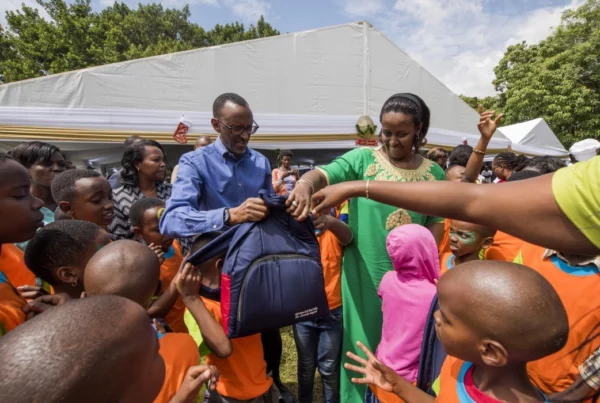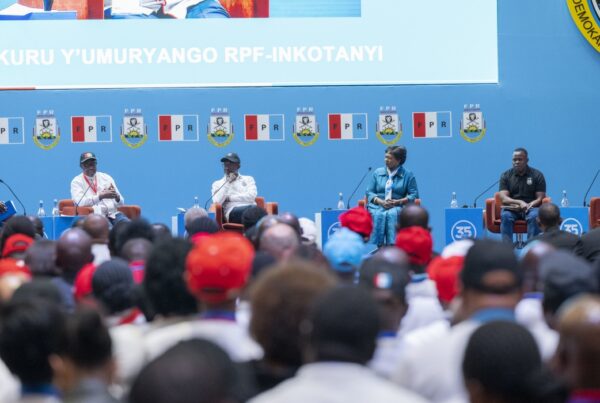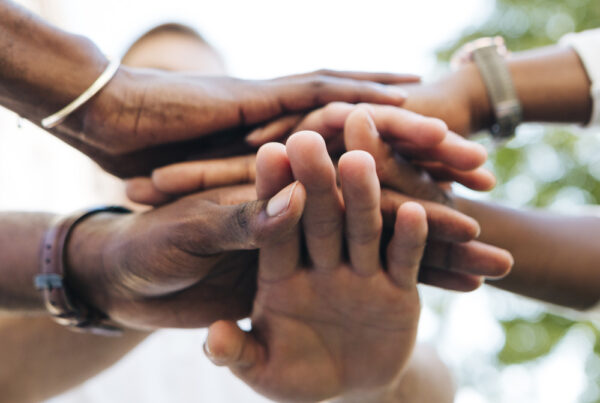If you were tuned into Radio Rwanda last Sunday morning (October 16th 2011), you must have heard them: two songs about Kigali that played one after the other. The anchorperson in the studio may have had his/her reasons for playing two songs that were on the same topic in sequence, but I doubt they were the same reasons I found the sequence of the songs intriguing.
The first song is in a solo, heavy baritone that bears a tinge of sorrowfulness, which is nonetheless pleasing to the ear. It talks about the beauty of Kigali’s rolling hills that are pleasantly interrupted by winding valleys, as you look down at the city from the top of Mount Kigali all the way to the airport, on the low-lying Kanombe stretch that is separated from Kabuga hill by a wide valley.
From Mount Kigali, the singer takes in the beauty of the view from Shyorongi hill, as you come down to the low hills and lower valleys of Kigali City. Then the singer switches to the view from Mount Jali and describes the beauty you behold over the hills of Gisozi, Gaculiro and Kacyiru on to the other hills.
It is after describing the physical beauty of Kigali that the reason for the tinge of sorrowfulness in the singer’s voice becomes clear. Despite the beauty of the city, he says, he is frightened as he thinks of places like Gakinjiro at night. (For information, Gakinjiro is Kinyarwanda for ‘slaughterhouse’.) He says he fears the lurking danger of the city during the day and the ever present, frequent killings at night.
Clearly, the Kigali of which the artiste sings was a Kigali whose beauty belied looming disorder and destruction, and the despair they engendered.
The second song is by today’s army band. It describes the same physical beauty of Kigali in a cheerful, celebratory voice, with a chorus in a refrain that repeats the points of beauty described by the lead singer. Instead of the slow beat, the second song takes on a higher-pitched, contented note and a quicker and more energetic pace.
Beyond the beauty of Kigali, the singer delves into the administration of the city. He recounts how Ba-Gitifu (executive secretaries) at the cell and sector levels are busy delivering services and working with Kigali residents to complement mayors in the “trinity” (inyabutatu) of Nyarugenge, Kicukiro and Gasabo districts, the three districts that form the administration of Kigali City.
Kigali residents, the executive secretaries and the district mayors in turn together complement the overall mayor at the Kigali City Council, to smoothen general administration of the city.
It is this administration, suggests the singer, which is responsible for the cleanliness and order characterizing the city. It is this administration that is overseeing Kigali’s rapid expansion, with new hotels being erected, new industries being established, new, fostered numbers of tourists being realised, et alibi (and others). In short, everything is being done to make life better for Kigali residents.
In contrast, then, where the first singer sees a physically beautiful but apathetic Kigali, which is gripped by the fear of chaotic total destruction that engenders despair, the second singer sees an equally physically beautiful Kigali that is dynamic and being guided along the path of calculated orderly growth, which engenders hope.
Two similarly beautiful tunes that are a pleasure to the ear of a slumbering listener, and yet two fundamentally different messages that are a shocker to the ear of an awakened listener.
Think Rwanda in place of Kigali and you’ll see why the first tune was sung before 1994 and the second, after 1994.
I must confess, however, that even I didn’t get the contrast in the massages immediately after listening to the songs. It was only after hearing something about “cordial trinity” in the second song that I realised the two records were strikingly different and sought them for an encore.
After listening a second time, I wondered: do we take time to capture the massages in the songs of some of our singers? Rwandans before 1994, were they seeing that impending destruction the first singer was seeing? Rwandans today, are they conscious of that “cordial trinity” that the second singer evokes?
In Gakinjiro, the first singer sees a symbol of destruction, as the name indicates and which was based on the truth of what was often happening there. It is a destruction that in reality burst out all over Rwanda in 1994 and all but consumed the nation, as the singer had predicted.
The second singer sees a symbol of “cordial trinity” in the way the three districts of Nyarugenge, Kicukiro and Gasabo are working harmoniously together, and working with their residents, to advance the overall growth of the city. Working together will help Rwandans realise progress.
I may have read more in their messages than the singers intended to pass to Rwandans but there is no mistaking their common understanding. Torn up into a discordant trinity of ethnicities, Rwandans will face destruction. Bound together by their common heritage as a trinity of Rwandans, they cannot but succeed.
I don’t know about you but, personally, I share that understanding with the two singers.
Twitter: @butamire



